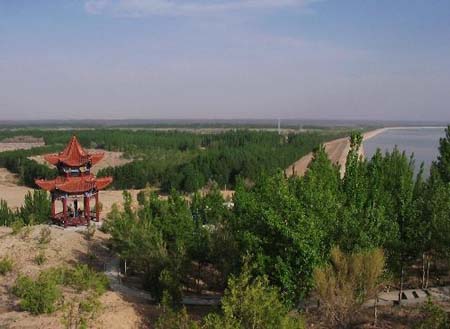Asia's largest artificial desert reservoir, Minqin Hongyashan Reservoir, recently kicked off its water saving project in Minqin County, Gansu Province, with a total investment of 90 million yuan(US$12.16 million), Chinanews.com reported.
This project will curb further ecological deterioration in Minqin County by saving 25.81 million cubic meters of water annually.
Minqin Hongyashan Reservoir (file photo)
Eighteen institutions will implement the water conservation project for the Hongyashan irrigation area.
This project is expected to be completed by October 31, 2008. By then, the project will greatly improve not only the basic production conditions for irrigation agriculture in this area but also increase water efficiency use in order to rationally distribute water resources and reduce water consumption. The project will reduce 25.81 million cubic meters of water used for irrigation and save 171.11 million yuan (US$23.12 million) each year.
Located along the Hexi Corridor of Gansu, Minqin County was once part of the renowned "Silk Road" in ancient times. Today the area is considered the "throat" of the Euro-Asian Continental Bridge, with Qilianshan to its south and Tengger Desert and Badanjilin Desert to its north. Minqin Oasis lies just between these two deserts.
Minqin's special geological position, along with local residents' irrational production activities, has compounded the serious ecological deterioration of the region's environment: strong winds and sandstorms occur frequently; ground water levels continue to decline and the Minqin Oasis has shrunk sharply.
The Shiyang River is the source of Minqin Oasis. With its sudden decline the Minqin Oasis has virtually turned into a desert island and has now become one of the four largest sandstorm sources in China.
The Hongyashang Reservoir, built in 1958 in Minqin County of Gansu, was constructed to save Minqin County and Minqin Oasis. The reservoir is Asia's largest artificial desert reservoir, with water storage of 127 million cubic meters. It irrigates 900,000 mu (60,030 hectares) of Minqin land and is seen as Minqin people's "source of life" in the desert.
(China.org.cn by Zhang Ming'ai, December 10, 2007)






